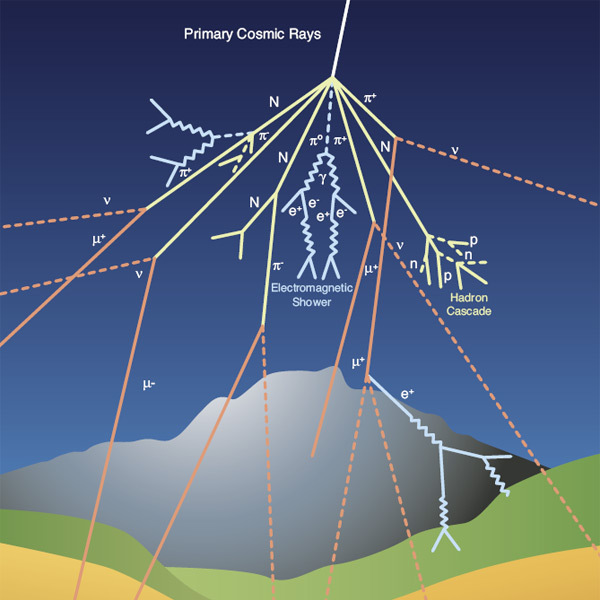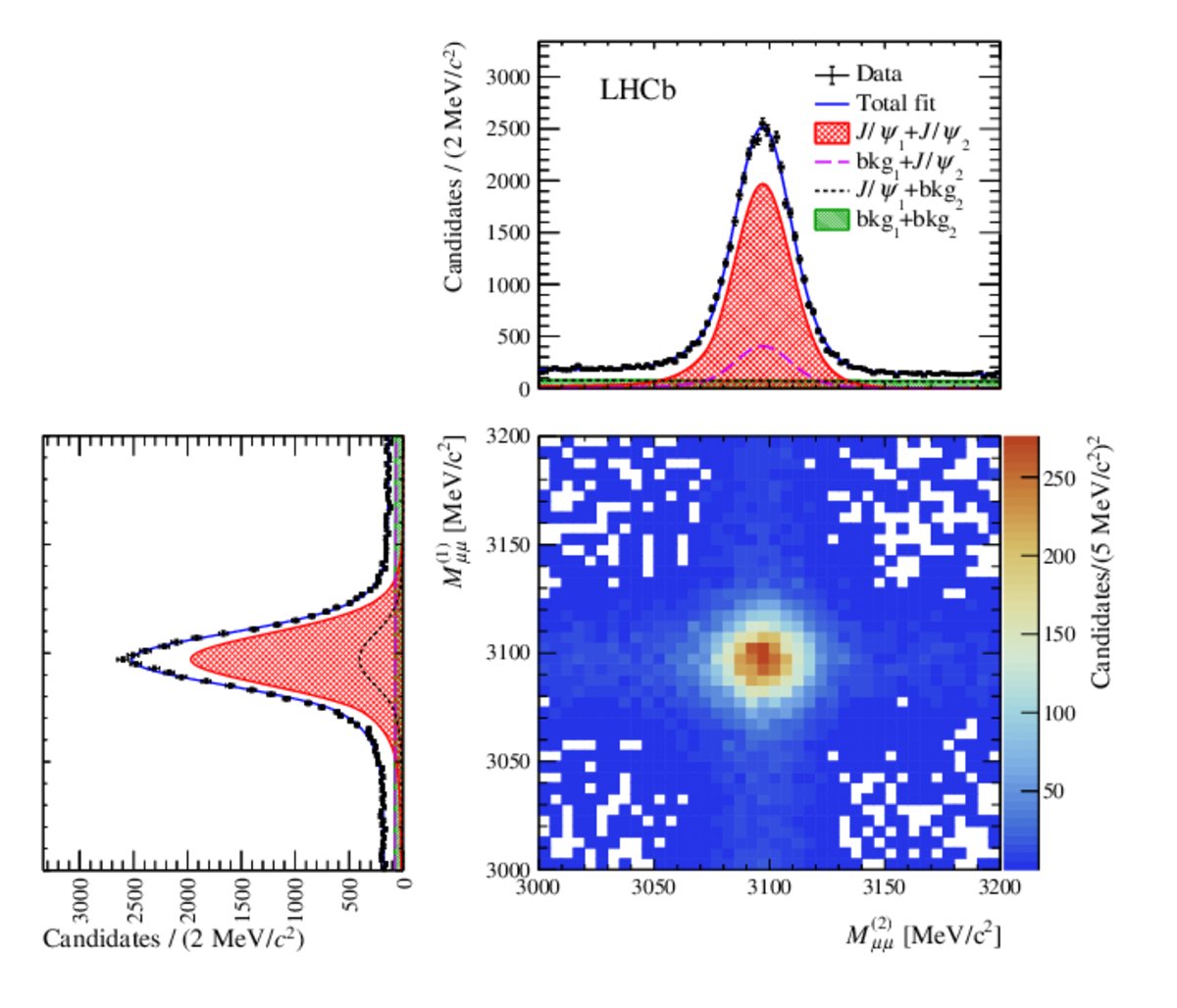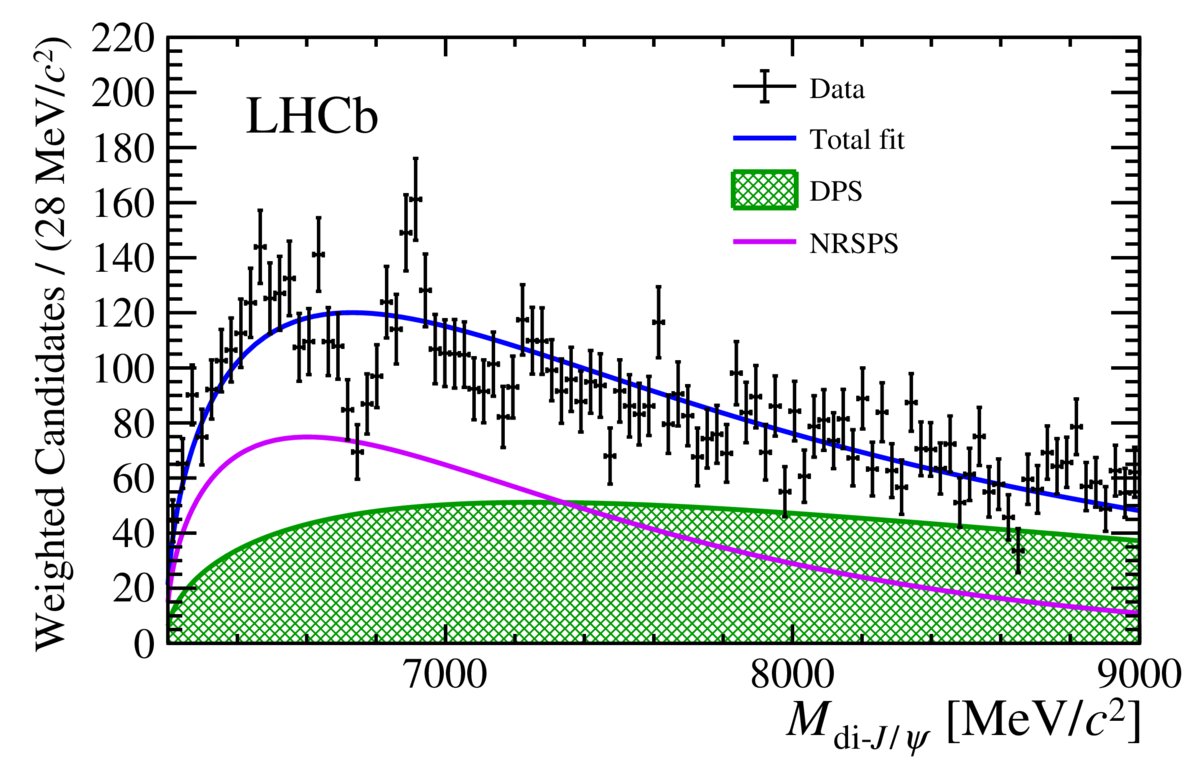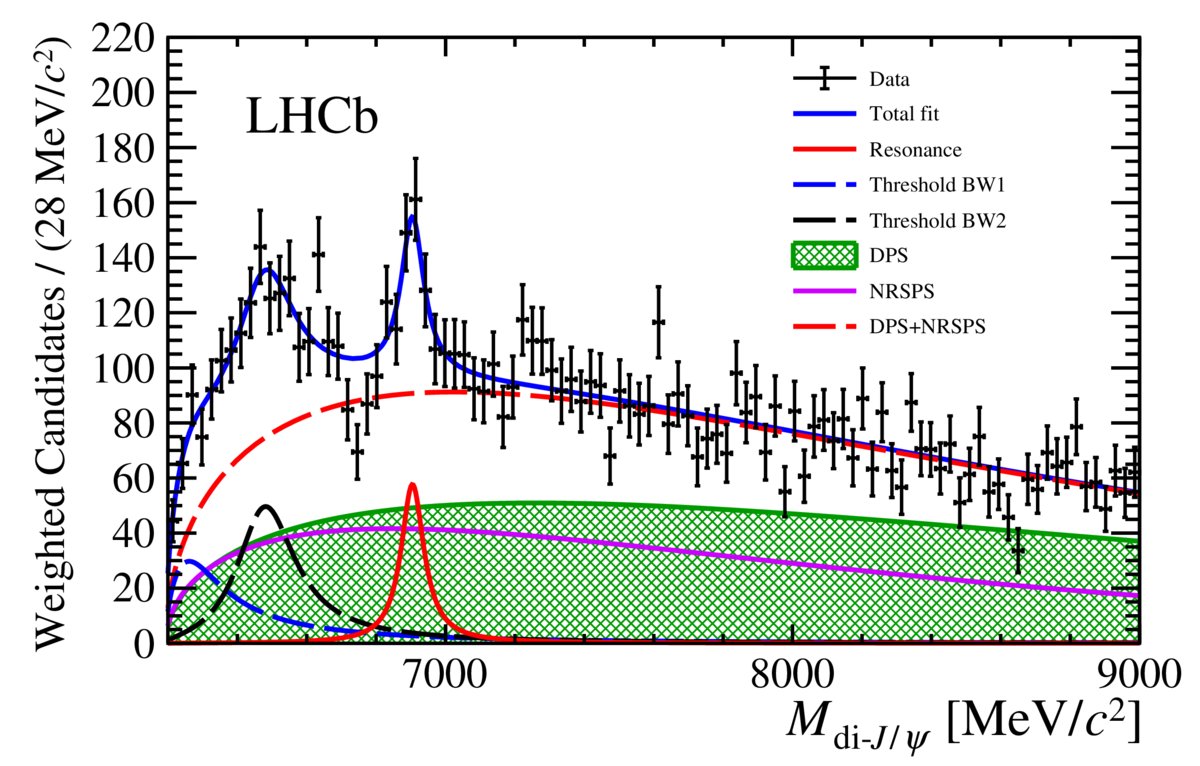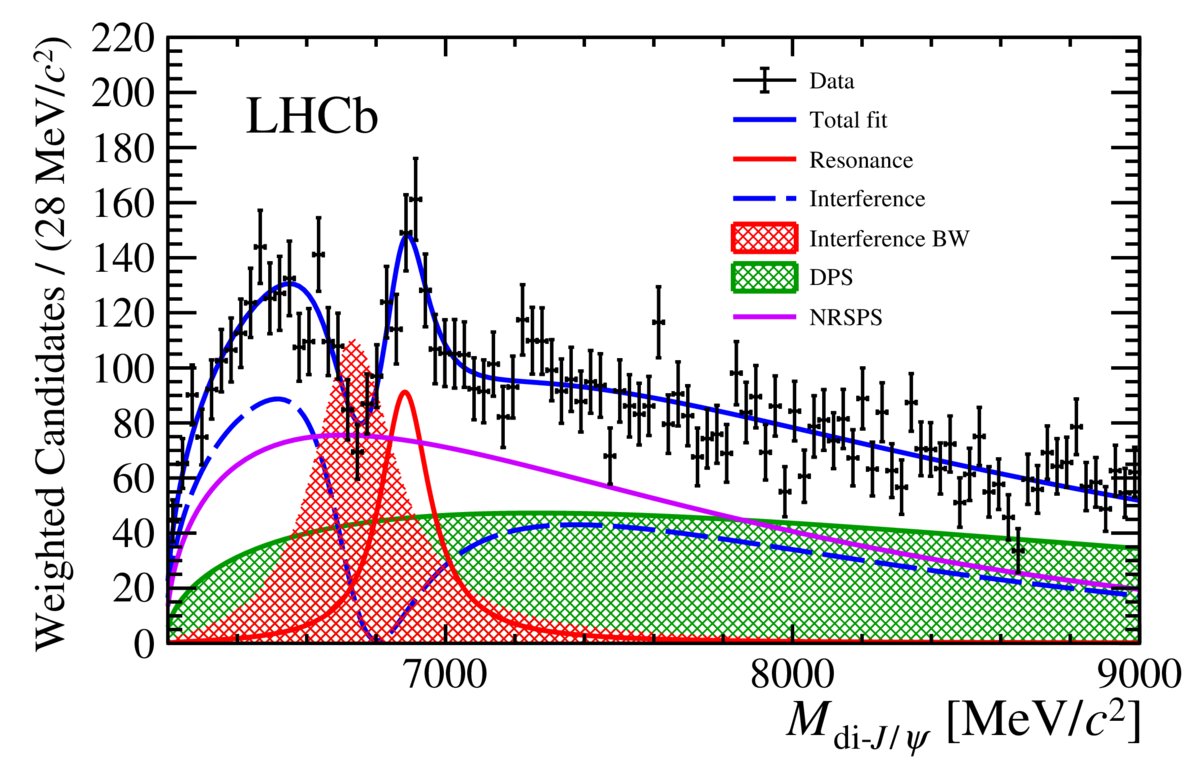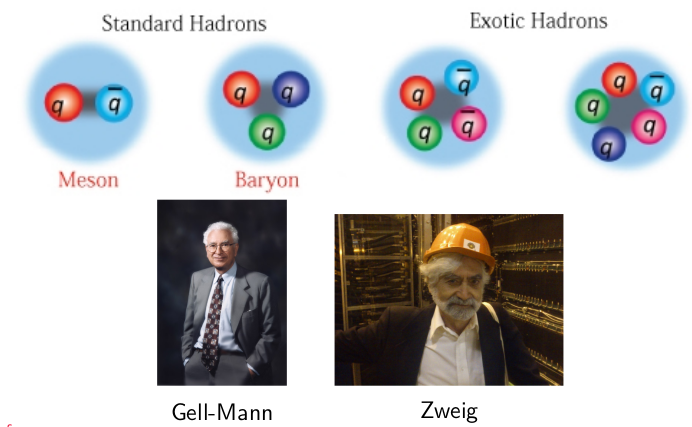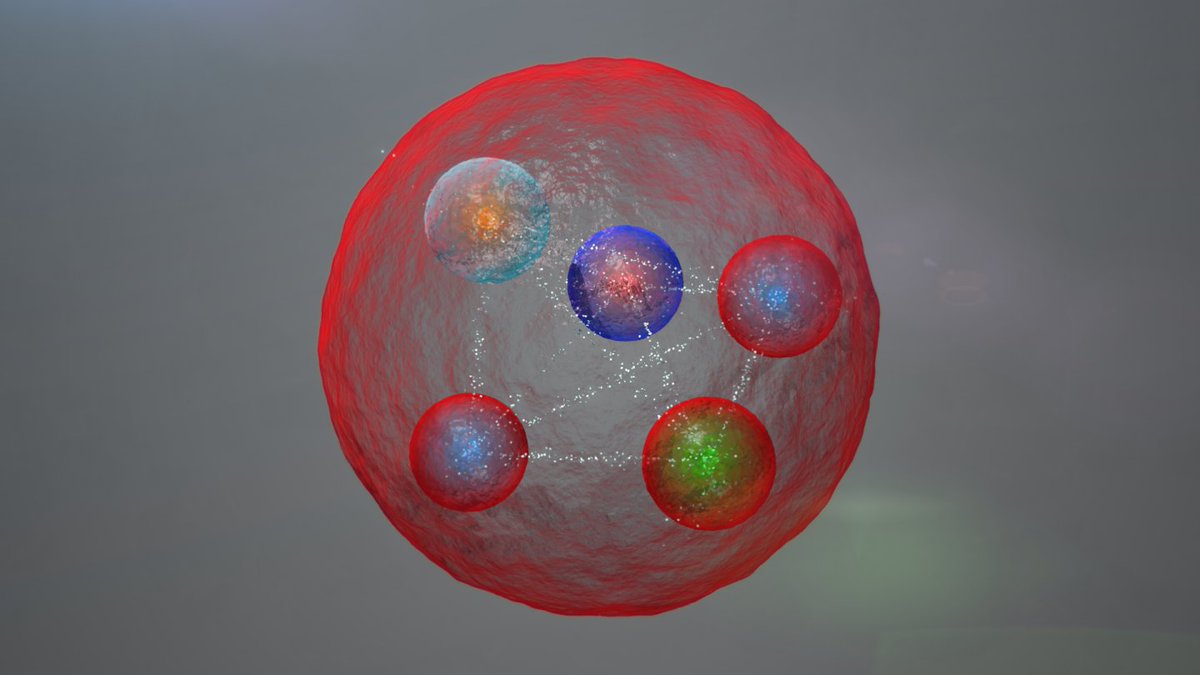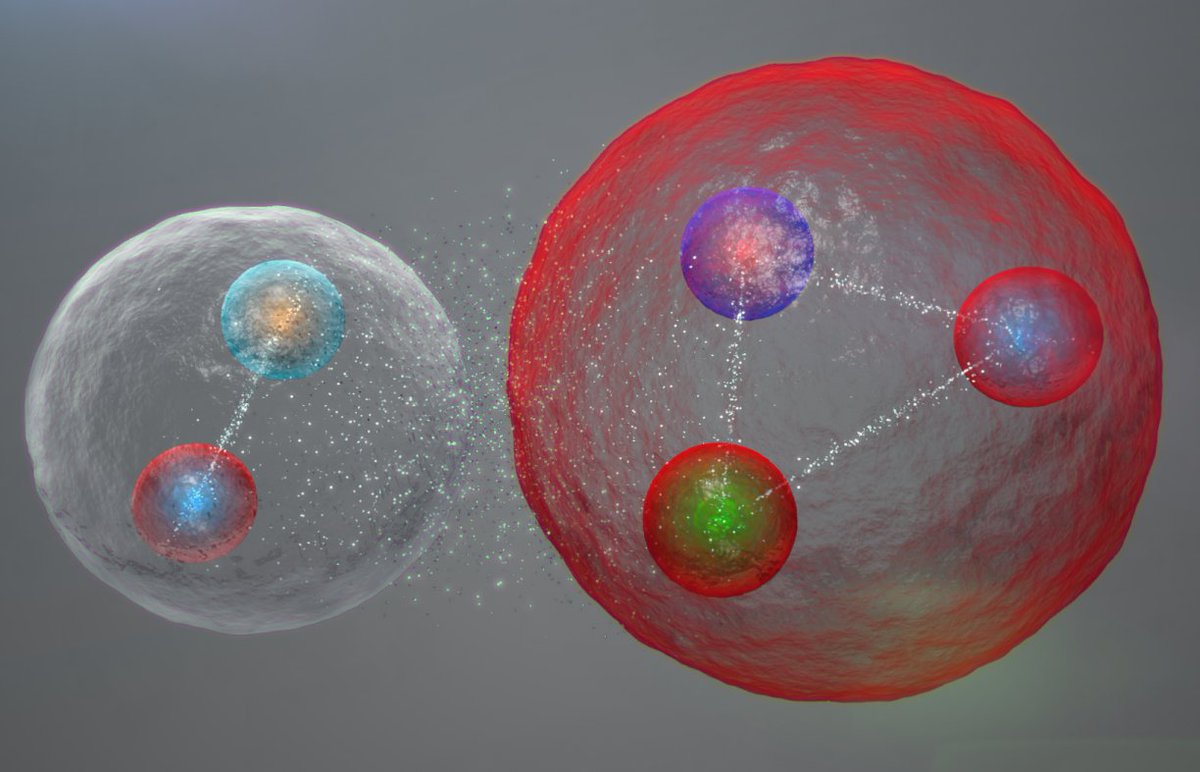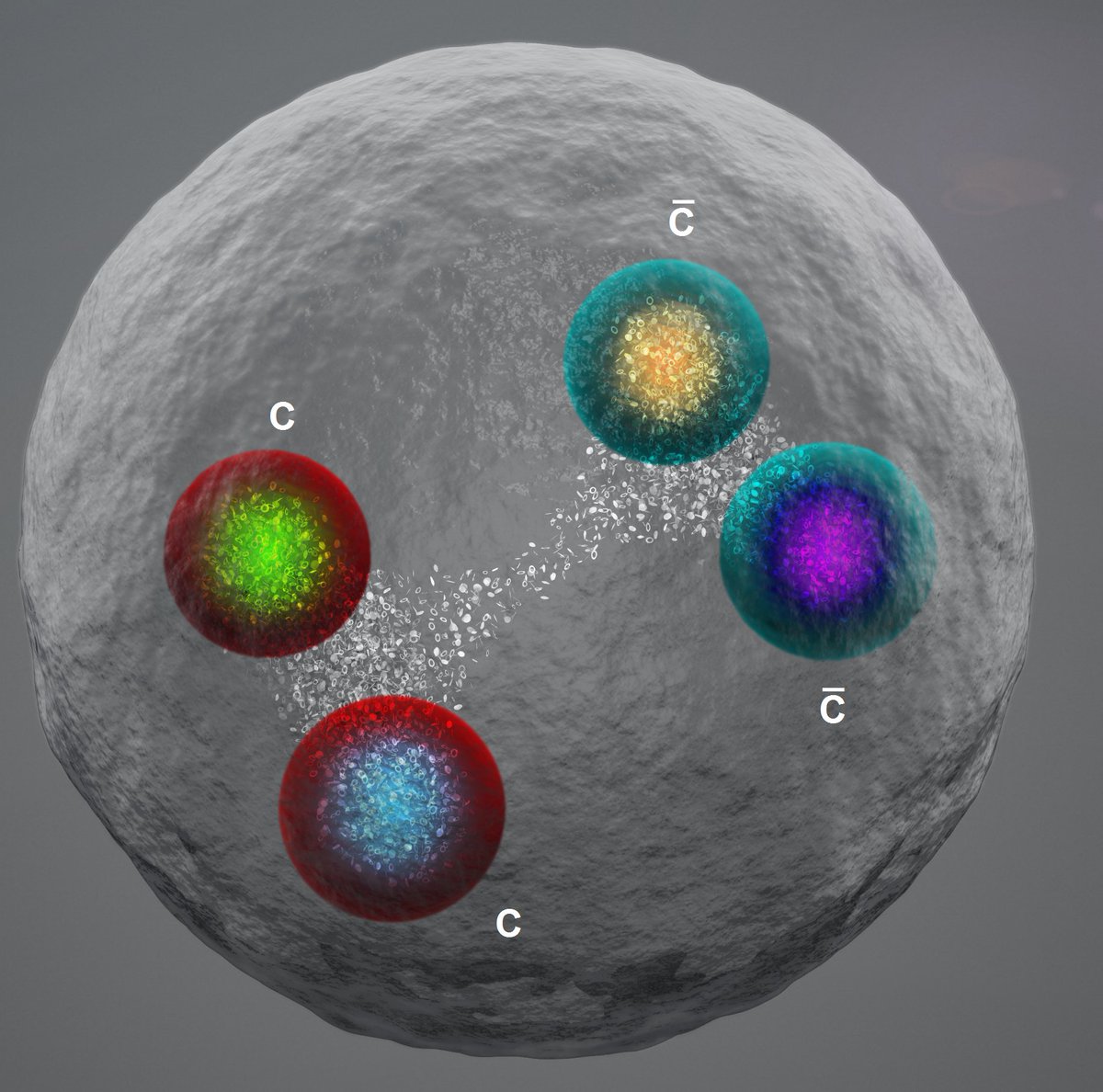Today @LHCbExperiment posted the observation of structure in the mass distribution of two J/ψ mesons. The J/ψ is the particle that proved the existence of the charm quark in 1974 (by two groups, hence the fancy name). It's a bound state of a charm quark and a charm antiquark. https://twitter.com/LHCbPhysics/status/1278190798136389633
These J/ψ mesons occasionally decay to two muons. The muon is the heavy brother of the electron and is really hard to miss in a detector because it traverses material easily. There is probably one coming from a cosmic ray and crossing your body right now.
So we start with FOUR muons - a dream of a signature at the LHC - and combine them into two J/ψ. We studied the production of J/ψ pairs in 2016 already. But this is the first time we report the mass of the system.
In the two-J/ψ spectrum we see a bumpy structure on top of the smooth background. There are two production mechanisms (labelled DPS and NRSPS). Explaining those would take us too far. All we need to know is that they get smooth mass distributions. Only with those the fit is bad.
From right to left, there is a clear peak at 6900 MeV/c², a dip below that, and maybe an excess at low masses. We get a decent fit with a resonance at 6900 and two more resonance-like structures (labelled Threshold BW1 and BW2).
We get an even better fit if instead we add a resonance around 6800 MeV/c² (hatched red) that interferes destructively with the NRSPS production. There are even more models in the appendix of the paper.
So, we don't know how many resonances are at play, but we know there are some. Such states would be so-called tetraquarks composed of two charm quarks and two anti-charm quarks. Tetraquarks were predicted by Gell-Mann and Zweig in 1964 and then long forgotten.
But in 2003, Belle observed an unexpected state called the X(3872) that is likely composed of four quarks. In 2015 LHCb even observed states with five quarks. Since then the debate is raging about what their structure is. Are they compact objects like a proton?
Or are they "molecules" (bound by the strong force), like the deuteron, which is a proton-neutron bound state.
The data suggests that the pentaquarks are molecules, and recently LHCb posted a paper that suggests the X(3872) is a molecule of a D̅ and a D* meson, each containing a charm quark. https://twitter.com/LHCbPhysics/status/1265901160126386177?s=20
But this four-charm tetraquark could well be a tightly bound state. For sure many interpretation papers will soon hit @arxiv.
Either way, it is additional information about the colour-confinement problem: We know quarks cannot be free. But we can't prove that it's a logical consequence of the strong interaction. https://en.wikipedia.org/wiki/Color_confinement
More info in Dutch https://twitter.com/vancalmthout/status/1278230665989959680?s=20
And on the @LHCbExperiment public page https://lhcb-public.web.cern.ch/Welcome.html#Tcccc

 Read on Twitter
Read on Twitter